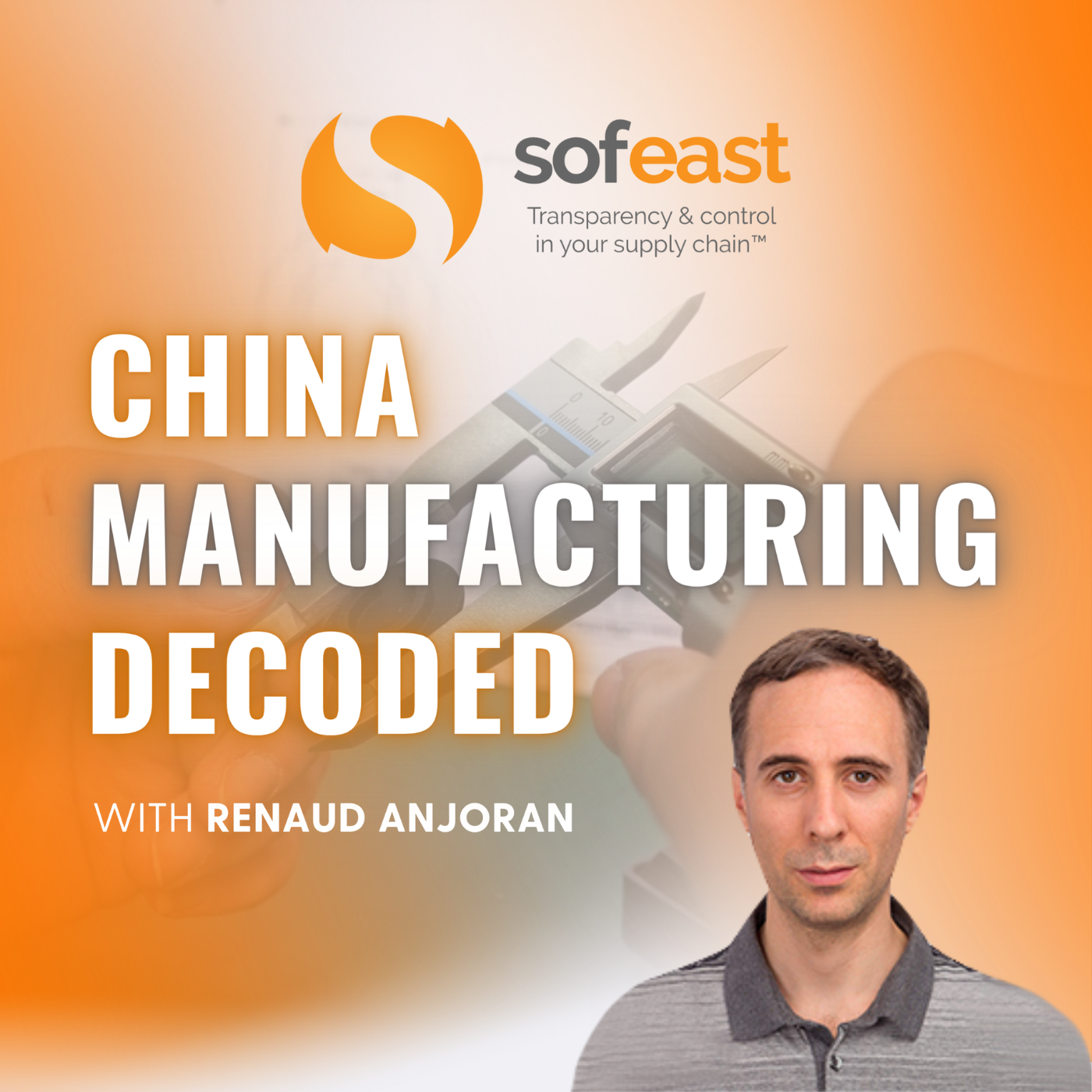
59.7K
Downloads
307
Episodes
Join Renaud Anjoran, Founder & CEO of Sofeast, in this podcast aimed at importers who develop their own products as he discusses the hottest topics and shares actionable tips for manufacturing in China & Asia today!
WHO IS RENAUD?
Renaud is a French ISO 9001 & 14001 certified lead auditor, ASQ certified Quality Engineer and Quality Manager who has been working in the Chinese manufacturing industry since 2005. He is the founder of the Sofeast group that has over 200 staff globally and offers services (QA, product development & engineering, project management, Supply Chain Management, product compliance, reliability testing), contract manufacturing, and 3PL fulfillment for importers and businesses who develop their own products and buyers from China & SE Asia.
WHY LISTEN?
We‘ll discuss interesting topics for anyone who develops and sources their products from Asian suppliers and will share Renaud‘s decades of manufacturing experience, as well as inviting guests from the industry to get a different viewpoint. Our goal is to help you get better results and end up with suppliers and products that exceed your expectations!
Episodes
Friday Feb 26, 2021
How We Set Up A New Factory In China (from idea to operation)
Friday Feb 26, 2021
Friday Feb 26, 2021
In This Episode...
Interested in setting up a factory of your own in China (or perhaps other countries in Asia, too)?
Renaud and his business partner Fabien have been there and done it, so let's explore how they set up our Chinese contract manufacturing subsidiary, Agilian Technology, and how they've tried to implement best practices learned over decades in China to offer something better than other Chinese factories.
Show Notes
00:00 - Introducing the episode
02:10 - What's the story behind Sofeast opening 'Agilian Technology' our contract manufacturing subsidiary (factory) in China? - Grounded in setting up a good, transparent supply chain in order to have better control - so opening our own factory for assembly, etc to close the loop for clients was a natural progression for the company.
07:32 - How going through this process was an education - being an actual Chinese manufacturer provided us with a lot of new opportunities, such as being able to agree on preferential credit terms with local Chinese component/material suppliers who would usually demand payment upfront from foreign customers.
The 6 phases we went through to open our factory
09:04 - Phase 1: Choosing the right site - how to find sites that fit our needs, dealing with estate agents, etc.
16:14 - Phase 2: Adhering to local regulations - includes fire regulations, battery storage, recruiting and training staff, preparing the production transfer from the old location, insurance, and more.
21:14 - Phase 3: Decorating the factory - planning the areas and decorating happens before the transfer. This includes deciding on decoration, floor style, toilets, ventilation, lighting, and much more. Following up on the contractor is crucial as it usually a one-off job so they may not be someone you have a long-standing relationship with.
26:05 - Phase 4: Setting up the office - important points are different areas, lighting, wifi internet access, plugs and sockets, flooring, etc.
27:11 - Phase 5: Setting up the workshop - plan for the layout and material flow to avoid internal logistics inefficiency, line layout to be optimal (we use compact U-shaped cells and also longer lines for higher volumes), power usage, lighting and ventilation, security, and more.
32:14 - Phase 6: Setting up the warehouse - warehouse layout with a focus on material flow, also installing racking, forklifts, setting up doors, fans, and lights. A word on preventing theft and its impact on production and business.
34:53 - Take best practices and implement them - observe the factories you like and implement their good ideas! An example of this was keeping our office-based staff who are involved with production near to the workshop with a glass wall so they have visibility of production. In many Chinese factories staff like production managers and quality managers often have separate offices and avoid going onto the factory floor, but this reduces the value they can add. Continuous improvement and problem-solving are built into how we structured our factory, but this is opposite to many other local competitors.
39:47 - Wrapping up
Related content...
- Take a look at Agilian's mass production in China page which includes a really helpful video from Renaud where he answers key questions customers have about Agilian before working with us on a manufacturing project.
- Visualize the different areas of the factory by watching them in operation on Agilian's YouTube channel.
- Renaud listed the phases followed to set up Agilian in this blog post.
Get in touch with us
- Connect with us on LinkedIn
- Send us a tweet @sofeast
- Prefer Facebook? Check us out on FB
- Contact us via Sofeast's contact page
Get even more great content or assistance with your own project
- Visit our website at Sofeast.com
- Subscribe to our YouTube channel
Subscribe to the podcast
There are more episodes to come, so remember to subscribe! You can do so in your favorite podcast apps here:
Get in touch with us
-
- Connect with us on LinkedIn
- Contact us via Sofeast's contact page
- Subscribe to our YouTube channel
- Prefer Facebook? Check us out on FB

No comments yet. Be the first to say something!